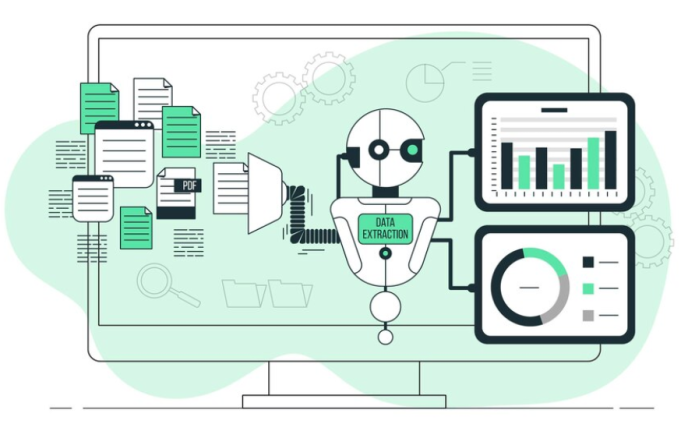In today’s fast-paced business landscape, the pursuit of efficiency is more critical than ever. Companies continually seek ways to streamline operations, reduce costs, and stay competitive. Workflow automation solutions have emerged as a powerful tool to achieve these objectives, and they are implied to play a pivotal role in shaping the future of business efficiency.
The Evolution of Workflow Automation
In its simplest form, workflow automation involves using technology to automate and optimize repetitive and manual tasks within an organization’s processes. Over the years, it has evolved from basic task automation to encompass complex, end-to-end business processes. Here’s a brief overview of this evolution:
- Task Automation: The earliest forms of workflow automation focused on automating individual tasks, such as data entry and document processing. This level of automation helped reduce errors and save time.
- Process Automation: As technology advanced, businesses started automating entire processes. This approach allowed for the seamless integration of various tasks and systems, improving efficiency and reducing process latency.
- End-to-End Automation: Today, workflow automation solutions can automate entire end-to-end business processes, from customer onboarding to order fulfillment. This level of automation enhances efficiency and drives agility and responsiveness in a rapidly changing business environment.
Key Benefits of Workflow Automation Solutions
As businesses look to the future, they recognize the substantial benefits of implementing workflow automation solutions:
- Efficiency and Productivity: Workflow automation reduces the time and effort required to complete tasks and processes. Employees can focus on more value-added activities by eliminating manual work, leading to increased productivity.
- Error Reduction: Human errors in manual processes can be costly and time-consuming to rectify. Workflow automation reduces the risk of bottlenecks by ensuring consistency and accuracy.
- Cost Savings: Automation reduces labor costs and eliminates the need for physical paperwork. It also helps in cost control by preventing costly mistakes.
- Scalability: Modern workflow automation solutions are scalable, adapting to the needs of growing businesses. As your operations expand, your automation system can grow with you.
- Improved Customer Experience: Efficient processes lead to faster response times and improved service quality. This, in turn, enhances the overall customer experience.
- Compliance and Auditability: Automation systems maintain a detailed record of all actions taken, making it easier to demonstrate compliance with regulations and industry standards during audits.
Exploring Workflow Automation in Different Industries
Workflow automation solutions are not limited to a specific industry; they have broad applications across various sectors. Let’s take a closer look at how workflow automation is transforming different industries:
- Healthcare: In healthcare, workflow automation streamlines patient admissions, billing processes, and appointment scheduling. It also aids in managing electronic health records (EHRs), reducing administrative overhead, and enhancing patient care.
- Finance: Financial institutions use workflow automation for tasks like loan approvals, fraud detection, and document management. Automation ensures compliance with regulations while improving transaction processing speed.
- Manufacturing: Manufacturers utilize workflow automation to optimize supply chain processes, track inventory, and monitor production lines. Automation enhances production efficiency and reduces downtime.
- Retail: Retailers leverage workflow automation to manage inventory, track sales, and improve customer service. It enables them to respond faster to changing customer demands and market trends.
- Human Resources: HR departments use automation to streamline recruitment, onboarding, and payroll processes. This reduces administrative burdens and enhances employee satisfaction.
The Future of Workflow Automation
The future of workflow automation holds immense promise. Here are some trends and developments that will shape its evolution:
- Artificial Intelligence (AI) and Machine Learning: AI and machine learning will enhance the capabilities of workflow automation by enabling systems to make intelligent decisions and adapt to changing conditions autonomously.
- Hyper-Automation: Hyper-automation combines various technologies like AI, robotic process automation (RPA), and analytics to automate complex processes end-to-end. This trend will lead to even more significant efficiency gains.
- Integration with IoT: With the Internet of Things (IoT) becoming more popular, workflow automation will integrate with IoT devices to collect real-time data and trigger actions based on sensor inputs.
- Enhanced Security: Security will be paramount, and workflow automation solutions will incorporate advanced security features to protect sensitive data and processes.
- Customization and Personalization: Workflow automation systems will become more customizable, allowing businesses to tailor their automation processes to their specific needs and requirements.
- Sustainability: Automation will play a role in sustainability efforts by optimizing resource use and reducing waste in various industries.
Implementing Workflow Automation in Your Business
To harness the future of workflow automation, consider these steps for effective implementation:
- Identify Opportunities: Start by identifying organizational processes and tasks that can benefit from automation. Focus on areas where efficiency gains can have the most significant impact.
- Set Clear Objectives: Define your automation goals. Are you aiming to reduce costs, improve customer satisfaction, or enhance compliance? Having clear objectives will guide your automation strategy.
- Select the Right Solution: Choose a workflow automation solution that aligns with your needs, budget, and scalability requirements. Make sure that it integrates seamlessly with your current systems.
- Design and Test Workflows: Work with your team to design automated workflows that streamline processes. Test these workflows to identify and address any issues or bottlenecks.
- Train Your Team: Guide your employees to ensure they can effectively use the new automation system. Please encourage them to provide feedback for continuous improvement.
- Monitor and Optimize: Regularly monitor the performance of your automated workflows. Use data analytics to identify areas for optimization and refinement.
Conclusion
The future of efficiency in business lies in embracing workflow automation solutions. As automation technology advances, organizations that leverage these tools will gain a competitive edge, improve productivity, and achieve better results. By exploring the potential of workflow automation today, you can position your business for a more efficient and prosperous future. Embrace automation, and let it lead you to a brighter, more efficient tomorrow.










